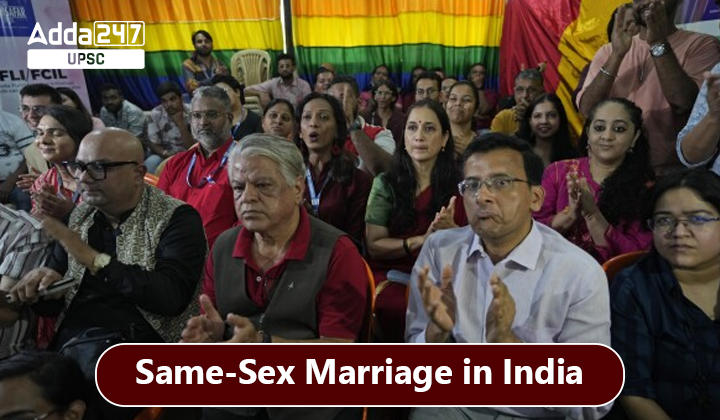Table of Contents
Same-Sex Marriage: The Supreme Court has rejected the plea for same-sex marriage. Here are the majority and minority views on queer couples’ right to marry, adopt, and enter into civil unions and the Special Marriage Act.
The Supreme Court of India, led by Chief Justice D Y Chandrachud, recently ruled against granting legal status to same-sex marriages. The verdict, delivered by a five-judge Constitution Bench, has sparked widespread debate and raised questions about the fundamental rights of queer couples. This article aims to dissect the majority and minority views on four crucial issues: the fundamental right to marry, the interpretation of the Special Marriage Act, queer couples’ right to adopt, and the possibility of civil unions for same-sex couples.
Fundamental Right to Marry
The petitioners’ claim that marriage is an unalienable right subject to state regulations did not hold water on CJI Chandrachud. The minority view asserted that marriage’s social and legal significance is a result of state regulation. The verdict suggested that marriage might not hold the same significance without the benefits derived from legal regulation.
The majority, in alignment with the Chief Justice, differentiated between what is “fundamentally important to an individual” and an enforceable fundamental right. Justice Bhat emphasized that personal preference, even if widely accepted, does not automatically qualify as a fundamental right. The article explores the majority opinion’s departure from the U.S. courts’ rationale for declaring the right to marry as a fundamental right.
The majority opinion also noted that the logic in many decisions by courts in the US that have underlined the rationale for declaring the right to marry a fundamental right as “being essential to the orderly pursuit of happiness (as it appears in their Declaration of Independence) by free persons” may not be sound.
Special Marriage Act
The keyframing of how the court can recognize same-sex marriage is by allowing a gender-neutral interpretation of the legislation that governs civil marriage in which the state, rather than religion, sanctions the marriage.
The SMA was enacted in 1954 to enable marriage between inter-faith or inter-caste couples without them giving up their religious identity or resorting to conversion.
The petitioners had asked the SC to interpret the word marriage as between “spouses” instead of “man and woman”. Alternatively, the petitioners had asked for striking down provisions of the SMA that are gender-restrictive.
Queer Couples’ Right to Adopt a Child
The petitioners argued that the guidelines of the Central Adoption Resource Authority (CARA), which do not allow unmarried couples to jointly adopt children, are discriminatory against queer couples who cannot legally marry.
The guidelines only allow a couple who have been in at least two years of a stable marital relationship to be eligible to adopt. Individually, queer people can adopt as single people. However, a single male is not eligible to adopt a girl child, even though a single female is eligible to adopt a child of any gender.
Civil Unions for Queer Couples
The halfway approach to recognizing civil unions for queer couples was debated during the hearing. Before full marriage rights were recognized for same-sex couples by the US Supreme Court, several states had allowed civil unions.
However, the petitioners argued that civil unions are not an equal alternative to the legal and social institution of marriage, and “relegating non-heterosexual relationships to civil unions would send the queer community a message that their relationships were inferior to those of heterosexual couples.
Conclusion
In the wake of the Supreme Court’s impactful decision, which has sent ripples across legal, social, and political spheres, this article undertakes a thorough examination of both majority and minority perspectives on crucial aspects. These include the fundamental right to marry, the nuanced interpretation of the Special Marriage Act, the rights of queer couples in adoption matters, and the potential avenue of civil unions. Through a meticulous dissection of each dimension, this article seeks to enrich the ongoing dialogue pertaining to LGBTQ+ rights in India and the continually shifting panorama of global marriage equality.



 TSPSC Group 1 Question Paper 2024, Downl...
TSPSC Group 1 Question Paper 2024, Downl...
 TSPSC Group 1 Answer key 2024 Out, Downl...
TSPSC Group 1 Answer key 2024 Out, Downl...
 UPSC Prelims 2024 Question Paper, Downlo...
UPSC Prelims 2024 Question Paper, Downlo...
